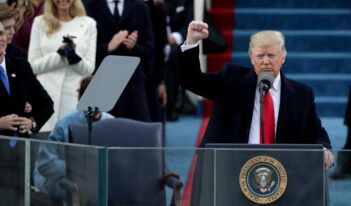
Although the EU probably has the legal authority to impose “fat taxes,” the policy case for doing so needs to be stronger.
According to a new study, an important dichotomy exists between voluntary programs run by state regulatory agencies and similar programs run at the federal level in the United States.
Voluntary programs seek to achieve public policy goals by offering firms benefits that encourage them to meet and then surpass current legal regulations. In recent years, for example, numerous governments have established voluntary programs to encourage companies to reduce greenhouse gas emissions and address other environmental problems in the absence of conventional regulation.
In a new article from Regulation & Governance, Lily Hsueh and Aseem Prakash of the University of Washington find that voluntary energy efficiency programs run by states are five times more likely to offer economic incentives than those run by the federal government.
The reasoning behind this is simple, according to Hsueh and Prakash. State governments lack the breadth and authoritative influence to form prestigious organizations in the way the federal government can; however, what they lack in influence they make up for with a more intimate knowledge of the economic and social needs of a local area.
Hsueh and Prakash assume that two types of benefits can be used to entice firms to undertake costly environmental protection efforts. One benefit is very tangible: capital in the form of funding, new technology, and training. The New Jersey Clean Energy Program is a prime example, according to Hsueh and Prakash, since it offers free training, financial incentives, and technological information for companies that voluntarily commit to undertake clean energy initiatives.
The second type of benefit is the reputational gain from an endorsement from a well-known government agency. An example of such an endorsement comes from the Environmental Protection Agency’s (EPA) Climate Leaders program, which honors firms that have adhered to voluntary environmental standards and publicizes information regarding these firms in magazines and newspapers.
Using data obtained from state and federal agencies’ records, Hsueh and Prakash analyze almost one-hundred and thirty voluntary energy efficiency programs to determine which primarily offer tangible incentives and which offer reputational incentives. In addition to coding for the level of government (state versus federal), Hsueh and Prakash further coded for media type (e.g., land or air), party control (e.g., Democratic or Republican), sector, and presidential administration. They found no significant correlation for any variables except the origin of the program in either a state or federal agency. According to their analysis, states are 5.39 times more likely to offer tangible incentives.
The Hsueh and Prakash study suggests that the federal government uses its reputational influence and authority to encourage firms to adhere to stricter business practices. Federal programs offer the brand recognition of federal agencies such as the EPA.
Hsueh and Prakash suggested that because states lack the same type of brand recognition they must offer tangible excludable benefits in order to elicit participation. However, states may also find it easier to offer other incentives finely targeted to local private sector needs. States may also use tangible incentives to try to reap economic gains, as such programs may help states compete for industry and an educated workforce within their borders.



